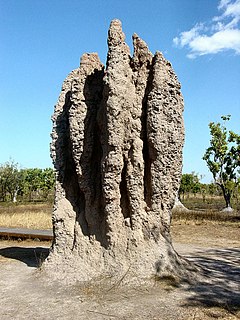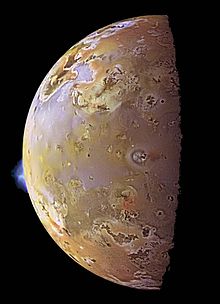From Wikipedia, the free encyclopedia
A superorganism is an organism consisting of many organisms. The term is used most often to describe a social unit of eusocial animals, where division of labour is highly specialised and where individuals are not able to survive by themselves for extended periods. Ants are the best-known example of such a superorganism, while the naked mole-rat is a famous example of the eusocial mammal. The technical definition of a superorganism is "a collection of agents which can act in concert to produce phenomena governed by the collective,"[1] phenomena being any activity "the hive wants" such as ants collecting food or bees choosing a new nest site. Superorganisms tend to exhibit the behaviours of homeostasis, power law scaling, persistent disequilibrium and emergent behaviours [2]
The term was coined in 1789 by James Hutton, the "Father of Geology", to refer to Earth in the context of geophysiology. The Gaia hypothesis of James Lovelock,[3] and Lynn Margulis as well as the work of Hutton, Vladimir Vernadsky and Guy Murchie, have suggested that the biosphere can be considered a superorganism, although this has been disputed strongly.[4] This view relates to Systems Theory and the dynamics of a complex system.
Superorganisms are important in cybernetics, particularly biocybernetics. They exhibit a form of "distributed intelligence," a system in which many individual agents with limited intelligence and information are able to pool resources to accomplish a goal beyond the capabilities of the individuals. Existence of such behavior in organisms has many implications for military and management applications, and is being actively researched.[5]
Superorganic in social theory
Nineteenth century thinker Herbert Spencer coined the term super-organic to focus on social organization (the first chapter of his Principles of Sociology is entitled "Super-organic Evolution"[6]), though this was apparently a distinction between the organic and the social, not an identity: Sencer explored the holistic nature of society as a social organism while distinguishing the ways in which society did not behave like an organism.[7] For Spencer, the super-organic was an emergent property of interacting organisms, that is, human beings. And, as has been argued by D. C. Phillips, there is a "difference between emergence and reductionism."[8]Similarly, economist Carl Menger expanded upon the evolutionary nature of much social growth, but without ever abandoning methodological individualism. Many social institutions arose, Menger argued, not as "the result of socially teleological causes, but the unintended result of innumerable efforts of economic subjects pursuing 'individual' interests."[9]
Spencer and Menger both argued that because it is individuals who choose and act, any social whole should be considered less than an organism, though Menger emphasized this more emphatically. Spencer used the organistic idea to engage in extended analysis of social structure, conceding that it was primarily an analogy. So, for Spencer, the idea of the super-organic best designated a distinct level of social reality above that of biology and psychology, and not a one-to-one identity with an organism.
Nevertheless, Spencer also argued that "every organism of appreciable size is a society," which has suggested to some that the issue may be terminological.[10]
The term superorganic was adopted by anthropologist Alfred L. Kroeber in 1917.[11] Social aspects of the superorganism concept are analysed in Marshall (2002).[12] Finally, recent work in social psychology has offered the superorganism metaphor as a unifying framework to understand diverse aspects of human sociality, such as religion, comformity, and social identity processes.[13]
Problems and criticisms
The question remains "What is to be considered the individual?" In Toby Tyrrell's critique of the Gaia hypothesis he argues that Earth's climate system does not resemble an animal's physiological system. Planetary biospheres are not tightly regulated in the same way that animal bodies are: "planets, unlike animals, are not products of evolution.Therefore we are entitled to be highly skeptical (or even outright dismissive) about whether to expect something akin to a “superorganism”". He concludes that "the superorganism analogy is unwarranted."[14]
Some scientists have suggested that individual human beings can be thought of as "superorganisms"; as a typical human digestive system contains 1013 to 1014 microorganisms whose collective genome ("microbiome") contains at least 100 times as many genes as our own [15][16] (see also Human microbiome project).


